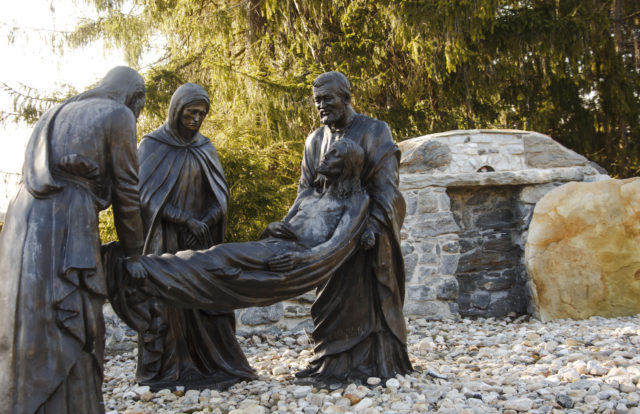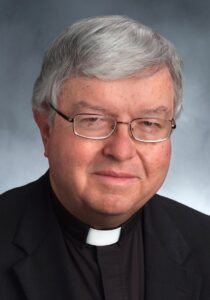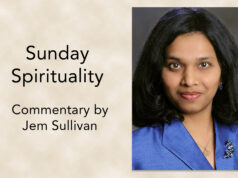
Q. When Jesus was dying on the cross, according to the Gospel, he cried out, “My God, why have you abandoned me?” Why was he saying this? Did he really feel that his Father had abandoned him? (Coxs Creek, Kentucky)
A. Half a century ago, when I first began to think about the meaning of scriptural verses, the conventional explanation was this: The passage you quote is only the first verse of Psalm 22, a prayer well-known to Jews of Christ’s time. That psalm, which begins as a cry of abandonment, actually ends up to be a prayer of hope and praise, a vote of confidence in God’s saving love.
Verse 25 of that psalm, for example, reads: “For (God) has not spurned or disdained the misery of this poor wretch, did not turn away from me, but heard me when I cried out.”
This explanation was meant to assure the questioner that Jesus, the divine Son of God, could never have felt distanced from his Father.

For me, to be honest, that explanation never rang true. Jesus did not “pretend” to be a human being. He really was one of us, subject to all the vulnerabilities that we ourselves experience.
How could he not have felt isolated, even abandoned by God? In the midst of his excruciating torture, all but one of his friends had fled in fear, their leader had denied even knowing Jesus, and Judas had betrayed him to his captors.
Fortunately, more than 20 years ago, Scripture scholarship caught up with what our instinct was telling us to be true. In the 1990s, Father Raymond Brown, then the world’s most noted Catholic New Testament scholar, argued that Jesus did truly feel abandoned as he hung on the cross.
Father Brown pointed to the fact that, while praying in the Garden of Gethsemane the night before, Jesus had addressed his Father with the Aramaic word “Abba,” a term of filial intimacy best rendered by our own word “Daddy.” But here on the cross, just moments before his death, Jesus now uses the word “Eloi,” a much more formal term for “Lord,” indicating a greater sense of separation.
Personally, I feel much more attracted to this very real human being — and much more confident that he understands us in our own moments of loneliness.
Q. Is it appropriate for people to say prayers out loud during adoration of the Blessed Sacrament? I have always cherished this silent time with the Lord, but in the parish I go to, when the Blessed Sacrament is exposed, people start praying the chaplet of Divine Mercy even before the priest has left the sanctuary. (Lincoln Creek, Oregon)
A. To my knowledge, there is no “rule” that prohibits public prayers during the exposition and adoration of the Blessed Sacrament. That having been said, the main goal of such a devotion is to foster private prayer and meditation.
On the feast of Corpus Christi in 1967, the Vatican, in an “Instruction on Eucharistic Worship,” said that the practice “stimulates the faithful to an awareness of the marvelous presence of Christ and is an invitation to spiritual communion with him” (No. 60).
The liturgical guidelines of the Diocese of Lansing in Michigan explain that “as properly understood, adoration is reverent and private time in prayer before the Blessed Sacrament.”
The Vatican instruction does allow that, during the period of adoration, “to foster personal prayer, there may be readings from the Scriptures together with a homily, or brief exhortations which lead to a better understanding of the mystery of the Eucharist” (No. 62).
But that same document is quick to add that “it is desirable that there should be periods of silence at suitable times” and notes that “during the exposition everything should be so arranged that the faithful can devote themselves attentively in prayer to Christ our Lord.”









